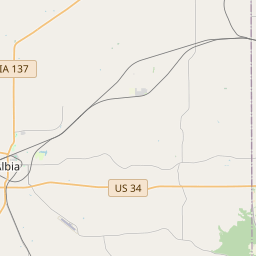Monroe County Civil War Monument
Historical marker location:






April 12, 1861: The Civil War begins with the Confederate attack on Fort Sumter, located in South Carolina's Charleston Harbor.
April 15, 1861: President Abraham Lincoln issues a call for 75,000 volunteers to serve in the Union Army to suppress the rebellion.
May 24, 1861: The first major land battle, known as the First Battle of Bull Run (or First Battle of Manassas), takes place in Virginia. It ends in Confederate victory.
September 17, 1862: The Battle of Antietam in Maryland becomes the bloodiest single-day battle in American history, with heavy casualties on both sides. The Union forces, commanded by General George McClellan, manage to halt Confederate General Robert E. Lee's advance into Union territory.
January 1, 1863: President Lincoln issues the Emancipation Proclamation, declaring that all slaves in Confederate-held territories are to be set free. However, the proclamation does not immediately free all slaves in the United States.
July 1-3, 1863: The Battle of Gettysburg in Pennsylvania takes place, resulting in a significant Union victory and inflicting heavy casualties on Confederate forces. It marks a turning point in the war.
November 19, 1863: President Lincoln delivers the Gettysburg Address, emphasizing the principles of liberty, equality, and the preservation of the Union.
April 9, 1865: General Robert E. Lee surrenders to Union General Ulysses S. Grant at Appomattox Court House in Virginia, effectively ending the Civil War.
April 14, 1865: President Lincoln is assassinated by John Wilkes Booth while attending a play at Ford's Theatre in Washington, D.C.
May 10, 1865: Confederate President Jefferson Davis is captured, signaling the collapse of the Confederate government.
December 6, 1865: The Thirteenth Amendment to the United States Constitution is ratified, officially abolishing slavery throughout the country.
While this timeline provides an overview of key events, it is important to note that the Civil War spanned over four years, from 1861 to 1865, and encompassed numerous battles, campaigns, and political developments that shaped the course of American history.
The famous explorers Lewis and Clark passed through Iowa in 1804 on their journey to the Pacific Ocean, but they didn't actually set foot on Iowa soil. The expedition traveled along the western border of Iowa, which was then part of the Missouri Territory.
European settlers began to arrive in the area in the mid-1830s. Many of these early settlers came from southern states and brought with them their agricultural practices. They established farms and built small communities, such as Albia, the county seat of Monroe County.
During the Civil War, Monroe County played a significant role, with many residents serving in the Union Army. The county contributed men to various regiments, and some notable soldiers from Monroe County received commendations for their bravery in battle.
In the late 19th and early 20th centuries, Monroe County experienced a period of growth and development. The arrival of the railroad in the 1870s facilitated transportation and trade, leading to the expansion of industries such as coal mining, lumber, and manufacturing. The population increased, and new schools, churches, and businesses were established.
Today, Monroe County remains a vibrant community with a mixture of rural and urban environments. The county continues to embrace its agricultural heritage while also diversifying its economy. It is home to various recreational areas and events, attracting visitors from both within and outside the county. Monroe County's history serves as a reminder of the resilience and pioneering spirit of its early settlers.
Monroe County Timeline
This timeline provides a concise overview of the key events in the history of Monroe County, Iowa.
- 1834: Monroe County is established.
- 1843: Albia is designated as the county seat.
- 1850: First county courthouse is built.
- 1862: The American Civil War leads to economic hardships for the county.
- 1875: The first railroad line is completed in Monroe County.
- 1880: The population of Monroe County reaches its peak at over 17,000 residents.
- 1899: Albia High School is established.
- 1920: The population begins to decline due to economic changes and modernization.
- 1941: The Japanese attack on Pearl Harbor leads to Monroe County's involvement in World War II.
- 1969: Lake Rathbun is created as a flood control reservoir.
- 1998: Monroe County Historical Museum is established.
- 2010: The population of Monroe County is recorded as 7,970.